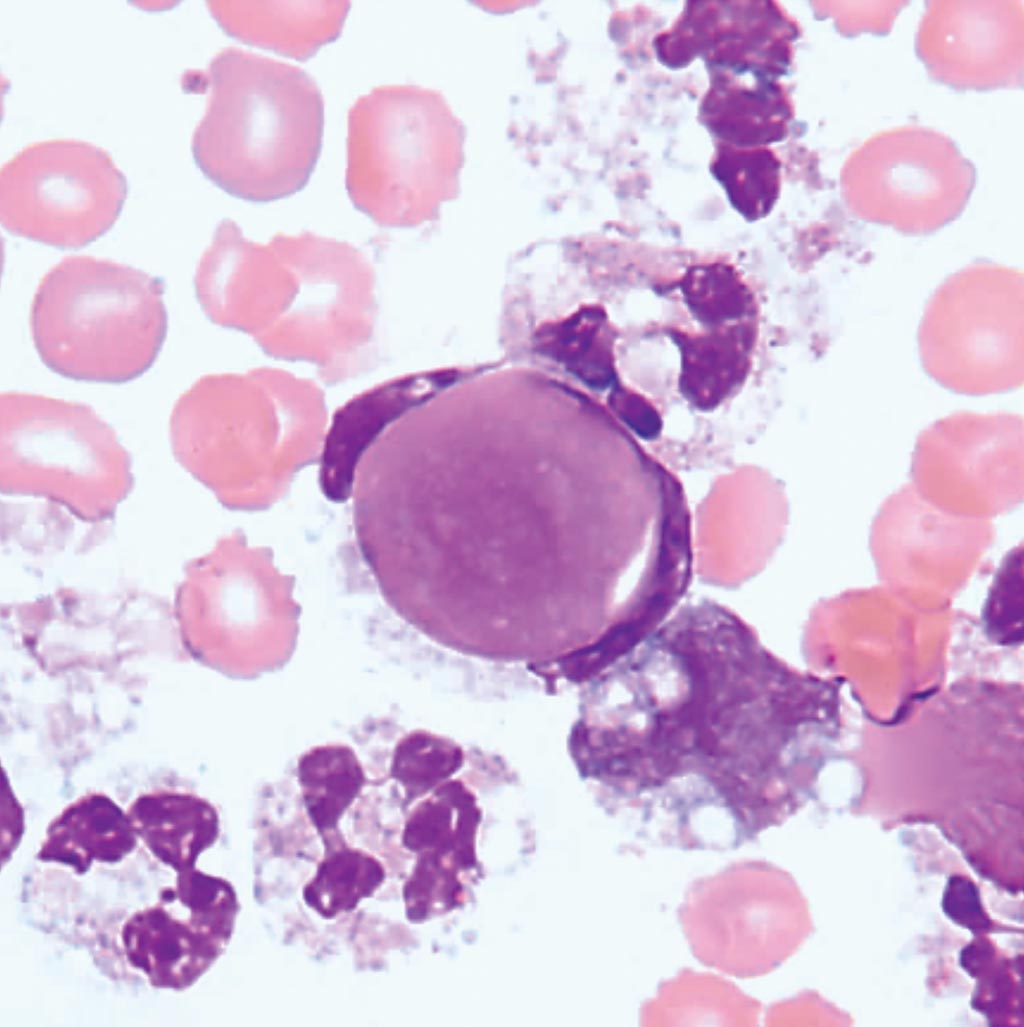Cardiovascular Risk Biomarkers Found for JSLE Patients
By LabMedica International staff writers
Posted on 25 Jun 2019
Systemic lupus erythematosus is an autoimmune disease typically affecting women between the ages of 15 and 50, and symptoms flare up unpredictably. Approximately 20% of cases begin during childhood and in these patients the disease is suggested to be more severe.Posted on 25 Jun 2019
Juvenile-onset systemic lupus erythematosus (JSLE) is an autoimmune disorder characterized by immune dysregulation, chronic inflammation and increased cardiovascular risk (CVR). Cardiovascular disease is the leading cause of mortality in JSLE not attributable to lupus flare. Symptoms of this diseases can affect many different body systems, including joints, skin, kidneys, blood cells, heart, and lungs.

Image: Lupus Erythematosus (LE) Cells are neutrophils that have engulfed lymphocyte nuclei coated with and denatured by antibody to nucleoprotein (Photo courtesy of Dr. Moustafa Abdou).
A team of scientists working with the University College London (London, UK) to investigated dyslipidemia and CVR in a cohort of JSLE patients using in depth metabolomics and related this to clinical and immune cell profiles and to identify novel biomarkers to predict CVR in these patients. Metabolic biomarker analysis by Nuclear Magnetic Resonance (NMR) and in-depth immune cell phenotyping (30 subsets by flow cytometry) was performed on serum and peripheral blood mononuclear cells (PBMCs) respectively from a discovery cohort of 35 JSLE patients (median age 19 (14-25), 12 males, 23 females) compared with 39 age/sex matched healthy donors (HCs) (median age 18 (16-25), 17 males, 22 females).
The team reported that patient stratification by metabolomic profile using unbiased hierarchical clustering revealed three groups that each had a unique lipoprotein profile, immune cell phenotype and clinical presentation. Group-1 had decreased atheroprotective high-density lipoproteins (HDL) and increased atherogenic very low and low-density lipoproteins (VLDL/LDL). Group-2 had elevated HDL, but reduced VLDL/LDL indicating that these groups could be at high and low CVR respectively. Patients in Group-3 displayed an intermediate CVR but a pro-inflammatory immune cell profile.
Patients in Group-1 had a significant increase in plasmablasts and activated T-cells compared to HCs and had clinical features associated with increased disease activity. This metabolomic patient stratification was validated in a separate JSLE cohort. Importantly ApoB:A1 ratio was identified as a highly predictive biomarker distinguishing between JSLE patients in Group-1 and 2, indicating high and low CVR respectively. Finally, longitudinal analysis revealed that the ApoB:A1 ratio biomarker remained stable over time.
George A. Robinson, PhD, a senior research associate and co-author of the study, said, “Our study identifies ApoB:A1 ratio and metabolomic lipoprotein signatures as potential new biomarkers to predict cardiovascular risk in patients with juvenile-onset SLE. Patient stratification using these biomarkers could provide an opportunity for tailored disease treatments using lipid modification therapy and lifestyle interventions.” The study was presented at the Annual European Congress of Rheumatology held June 12-15, 2019, in Madrid, Spain.
Related Links:
University College London







 Analyzer.jpg)

 assay.jpg)



